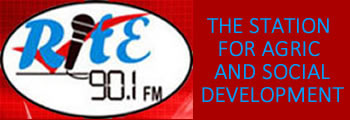Mothers Advised To Exclusively Breast Feed Their New Borns For Good Health

Breastfeeding is an unequaled way of providing ideal food for the healthy growth and development of infants; it is also an integral part of the reproductive process with important implications for the health of mothers, Mrs Jane Bans Tay, a nutritionist stated.
Review of evidence has shown that, on a population basis, exclusive breastfeeding for 6 months is the optimal way of feeding infants. Thereafter infants should receive complementary foods with continual breastfeeding up to 2 years of age or beyond.
According to her, to enable mothers to establish and sustain exclusive breastfeeding, which enable infant only to receives breast milk without any additional food or drink, not even water for 6 months, it will be of great benefit for parents to initiate breastfeeding within the first hour of life to enhance good health and growth.
Mrs Jane Bans Tay said, breast milk is the natural first food for babies which provides energy and all the nutrients that the infant needs for the first months of life, and it continues to provide up to half or more of a child’s nutritional needs during the second half of the first year, and up to one-third during the second year of life.
Highlighting on the benefits, she said “breast milk promotes sensory and cognitive development, and protects the infant against infectious and chronic diseases. Exclusive breastfeeding reduces infant mortality due to common childhood illnesses such as diarrhoea or pneumonia, and helps for a quicker recovery during illness”
“Breastfeeding contributes to the health and well-being of mothers; it helps to space children, reduces the risk of ovarian cancer and breast cancer, increases family and national resources, is a secure way of feeding and is safe for the environment” she said.
The nutrition officer further said breast milk provides the ideal nutrition for infants. It has a nearly perfect mix of vitamins, protein, and fat — everything your baby needs to grow. And it’s all provided in a form more easily digested than infant formula.
Breast milk contains antibodies that help your baby fight off viruses and bacteria. Breastfeeding lowers your baby’s risk of having asthma or allergies. Plus, babies who are breastfed exclusively for the first 6 months, without any formula, have fewer ear infections, respiratory illnesses, and bouts of diarrhea. They also have fewer hospitalizations and trips to the doctor.
Breastfeeding has been linked to higher IQ scores in later childhood in some studies. What’s more, the physical closeness, skin-to-skin touching, and eye contact all help your baby bond with you and feel secure. Breastfed infants are more likely to gain the right amount of weight as they grow rather than become overweight children.
The AAP says breastfeeding also plays a role in the prevention of SIDS (sudden infant death syndrome). It’s been thought to lower the risk of diabetes, obesity, and certain cancers as well. Adding that breast feeding is also important to the health of the lactating mother
“Breastfeeding burns extra calories, so it can help you lose pregnancy weight faster. It releases the hormone oxytocin, which helps your uterus return to its pre-pregnancy size and may reduce uterine bleeding after birth.
Breastfeeding also lowers your risk of breast and ovarian cancer. It may lower your risk of osteoporosis, too. Since you don’t have to buy and measure formula, sterilize nipples, or warm bottles, it saves you time and money. It also gives you regular time to relax quietly with your newborn as you bond” Jane Bans Tay noted.
She also demonstrated the best breastfeeding positions to help lactating mother breastfeed their wards well: The best position for you is the one where you and your baby are both comfortable and relaxed, and you don’t have to strain to hold the position or keep nursing.
Here are some common positions for breastfeeding your baby:
Cradle position. Rest the side of your baby’s head in the crook of your elbow with his whole body facing you. Position your baby’s belly against your body so he feels fully supported. Your other, “free” arm can wrap around to support your baby’s head and neck — or reach through your baby’s legs to support the lower back.
Football position. Line your baby’s back along your forearm to hold your baby like a football, supporting his head and neck in your palm. This works best with newborns and small babies. It’s also a good position if you’re recovering from a cesarean birth and need to protect your belly from the pressure or weight of your baby.
Side-lying position. This position is great for night feedings in bed. Side-lying also works well if you’re recovering from an episiotomy, an incision to widen the vaginal opening during delivery. Use pillows under your head to get comfortable. Then snuggle close to your baby and use your free hand to lift your breast and nipple into your baby’s mouth. Once your baby is correctly “latched on,” support your baby’s head and neck with your free hand so there’s no twisting or straining to keep nursing.
Educating lactating mothers on what ABCs are in Breastfeeding, she said
A = Awareness. Watch for your baby’s signs of hunger, and breastfeed whenever your baby is hungry. This is called “on demand” feeding. The first few weeks, you may be nursing eight to 12 times every 24 hours. Hungry infants move their hands toward their mouths, make sucking noises or mouth movements, or move toward your breast. Don’t wait for your baby to cry. That’s a sign he’s too hungry.
B = Be patient. Breastfeed as long as your baby wants to nurse each time. Don’t hurry your infant through feedings. Infants typically breastfeed for 10 to 20 minutes on each breast.
C = Comfort. This is key. Relax while breastfeeding, and your milk is more likely to “let down” and flow. Get yourself comfortable with pillows as needed to support your arms, head, and neck, and a footrest to support your feet and legs before you begin to breastfeed.
By: Austin Ofori Addo/ritefmonline.org/austinofori.addo@gmail.com




